Without Pity: Ann Rule's Most Dangerous Killers Read online
Page 2
Since Oxley and Myer said they had stumbled upon the shack while they were walking in the rugged hills, they were a little disoriented and had trouble figuring out how to get back to the spot where they’d seen the girls.
Mayo drove along the increasingly rutted dirt road and was just about to turn back, when they suddenly spotted an old A-frame shed that weather must have battered for half a century. It was about to collapse.
“That’s it,” Myer said. “That’s where I saw them.”
The deputy eased out of his patrol car and started to walk toward the pile of weathered boards when suddenly a large gray dog—or wolf—bared its teeth at him and barked ferociously. He paused, and saw that it was a dog, probably a husky—German shepherd mix, that was barring the way.
“I’m pretty good with animals,” Myer called out from the car. “Let me try.”
For a fleeting moment, Mayo wondered if he might have walked into a trap. He was far from backup with two scruffy-looking strangers, and now Myer seemed able to get closer to the dog than he had. Maybe the dog already knew Myer. The deputy wondered if there really were two girls inside the shack.
But Myer seemed sincere as he talked calmly to the dog, and grudgingly the animal finally let him approach and allowed himself to be tied to a post.
Mayo peered into the old shed through some gaping one-by-eights, his eyes slowly adjusting to the darkness inside. The girls were there, all right. At this point, he had no idea if they had been raped, but they were most certainly dead. And they probably had been dead for days.
Even in death, the two girls—one flaxen-haired, the other with brown hair—showed signs of their former beauty. Their bodies were tanned and slender.
Mayo backed away from the terrible sight and ran to his patrol car to radio for help from the sheriff’s headquarters in Wenatchee. There was no possibility that the girls had perished accidentally. From the mote-filled beams of sunlight that filtered into the shack, Mayo saw bruises and dried blood on their bodies. Either they had been attacked here in the shed or someone had carried their bodies here to hide them.
While the three men waited for help, they filled a battered metal dish with water from their canteens for the dog, which had stationed himself loyally next to his owners’ bodies, possibly waiting there for days.
Right after receiving Deputy Mayo’s call, Chief of Detectives Bill Patterson and detectives Jerry Monroe and Tillman Wells had left their offices in Wenatchee and headed north along the Columbia River.
Careful not to step on physical evidence that might have been left behind at the murder site, the Chelan County investigators squinted into the dilapidated structure. The brunette lay closer to the entrance than her companion. She was partially clothed, wearing hiking clothes and boots. And dried blood covered what they could see of her body. Someone had apparently tossed her backpack on top of her, perhaps in a hurried attempt to hide her body, perhaps as a gesture of remorse for what he had done to her. Most of her wounds appeared to be in the upper portion of her body.
The second girl’s body was nearby. She was nude, and her jeans, thick-soled hiking boots, and backpack were beside her. The blond girl had fought her killer: her hands had wounds from a sharp object.
Who were they? The dead young women looked so much like the hundreds of girls who moved through the Chelan County area in picking season. They were obviously experienced campers and their gear had been well used. How they had come to be in this lonely shed so far off the main road was a puzzle. It would seem that they would have to have been familiar with the region to even know the ramshackle structure was here. Either that or they had been led here by someone who knew about it.
Not knowing the victims’ names, the three detectives temporarily dubbed them “Victim Number One” and “Victim Number Two.”
They lifted the blond girl’s backpack carefully from the shed. Maybe Victim Number Two’s belongings would help identify her. The bag contained the usual: clothes, makeup, camping gear. But they also found two prescription pill bottles from a pharmacy in Lincoln City, Oregon. The name “Pat Weidner” was on one bottle; the other prescription was for “Brad King.*”
They found a purse in the shack, and it contained $59.08. The detectives also fished a tin can from one of the packs, and it had two $10 bills in it—emergency money perhaps. Robbery was an unlikely motive for double murder.
The purse held a Social Security card and an Oregon driver’s license, both in the name of “Beverly Mae Johnson.” Her birth date was listed as May 14, 1952, and her description was 5 feet 3 inches and 110 pounds. The address was also in Lincoln City, a resort town along the Oregon coast. She’d been very young, only twenty-three.
Tentatively, Patterson figured that the petite blond girl was Johnson, and the taller brunette was almost surely Weidner. That was much easier to deduce than whatever reasons had brought the victims hundreds of miles from home to a rundown shack in the wilderness.
Dr. Robert Bonafaci, the Chelan County Medical Examiner, arrived at the scene with Detective Don Danner. Bonafaci said that it appeared that both women had died from having their throats cut. Patty Weidner, who had been taller and huskier than her friend, had probably had no warning of danger. Either she had been asleep or she hadn’t expected to be attacked because she apparently had put up no fight at all. But Beverly Johnson, who looked to weigh no more than a hundred pounds, had fought valiantly. She had the deep cuts in her hands—defensive wounds. Whether rape had been the motivation for such violence would have to be determined at the autopsy.
Dr. Bonafaci gave his OK for the bodies to be transported to Wenatchee to await postmortem examinations. Now the Chelan County detectives could move in to work the crime scene.
Patterson felt both girls had been killed in or near the shed. Blood droplets marked the sandy soil and led them to a spot about six feet from its entrance. Here, there had been a large puddle of blood, long dried now into a dark brown segmented splotch. They found even more blood fifty-six feet away, and in several areas where the dog had dug frantically into the soft soil. These too bore traces of his mistresses’ blood.
Had the victims screamed for help? It would have done little good. They were miles away from anyone who could have rescued them. No one on the ranch two miles down the road could have heard their screams.
Patterson and his crew of detectives wondered if the dog might prove to be their best—albeit silent—witness. He had been very protective of the victims’ bodies, and he must have tried to defend the girls when they were attacked. If he had managed to bite the killer or killers, his bite marks in their flesh could be compared to his teeth with a scanning electron microscope.
Now that the bodies he’d guarded were gone, the dog paced nervously.
The investigators searched the second backpack. There was nothing in it that would help identify its owner. They did find a pocketknife with the initials “G.B.” scratched on the handle. That didn’t match either victim’s initials.
By 7:00 P.M., the shadows of the hills encroaching upon the crime scene cast it in odd purplish light. But the Chelan County probers had managed to bag and label the last of the evidence before sundown. The detectives had sketched the scene and photographed it, and even made moulage castings of tire tracks in the area. Still, they feared the moulages would be of little use; the earth was baked so hard and dry that little dust devils whirled.
Now Detective Chief Patterson and his men would have to seek positive identification for the two young victims, and somehow backtrack on their journey to Chelan. It was a long way from the Oregon coast to these isolated hills.
Their trail was relatively cold; Dr. Bonafaci felt the girls had been dead for more than thirty-six hours. He believed they had probably been killed on Sunday, September 28, but the exact time could vary by a few hours either way, depending on the temperature outside. Rigor mortis had come and gone, making time-of-death estimates a little difficult.
Bonafaci performed the autopsies.
He found that the blond victim, now confirmed to be Beverly Johnson, had died as a result of exsanguination (bleeding to death) from her neck wounds. He detected no significant trauma to her brain, chest, or abdomen. Oddly, there were no positive signs of rape beyond her nakedness—no bruising on the inside of her thighs or tearing of her vagina or rectum. The second girl (who was still called “Jane Doe”) had also succumbed to exsanguination, although she did have two scalp bruises, suggesting she had been struck on the head. There were, however, no signs of underlying brain damage. Apparently, this victim hadn’t been sexually assaulted either.
Still, Beverly Johnson’s nudity and the fact that “Jane Doe’s” clothing was in disarray certainly suggested that rape had been attempted.
It was sick and ugly. They hadn’t been robbed, they might not have been raped, yet someone had coldly slit their throats. Were the detectives looking for someone who got his thrills merely from the act of killing? They hoped not, because that was the most dangerous breed of killer of all.
The only living witness to what must have been terrifying violence was the now-crestfallen dog. He was housed in the county jail, wolfing down dog food and water as if he were starved. Even if he recognized the killer, he wouldn’t be able to tell anyone. If he did snarl or the hackles raised on his neck when confronted with a suspect, it was doubtful that any judge would allow that as testimony.
As soon as news of the double murder hit the media, Bill Patterson and his men were deluged with tips from citizens. One migrant worker reported that three or four men he had never seen before had offered him a ride from a tavern in Chelan. “They drove me up to Knapp’s Coulee and said if I didn’t give them everything I had, they’d kill me on the spot,” he said. “I gave them my wallet with all my I.D. and thirty-five dollars. They dumped me and left me out there. They left driving down towards Entiat.”
He described the thieves as “hippie types” with full beards, and said they were driving either a two-door Chevy or a Pontiac. Knapp’s Coulee was quite close to where the bodies had been found, but the incident had happened days before the victims’ probable time of death.
An elderly couple reported that they’d driven past Old Downey Road on September 25. They had noticed a plume of dust as if a vehicle had just gone up the road, but they saw no one. When they came back some time later, they had seen a 1969 or 1970 light green or blue Ford pickup with a canopy turning from Old Downey Road. There wasn’t a lot of traffic there, so they remembered it. They had heard a dog barking somewhere too, but hadn’t thought anything of it at the time.
The dog couldn’t have been the dead girls’ gray dog; he was miles away, at the crime scene, and Patterson couldn’t make a case out of a dust trail and a pickup truck. More important, the witnesses had seen the truck five days before the bodies were discovered. The victims would still have been alive on the 25th, although it was possible they might have been camping back down Old Downey Road at the time.
Another lead seemed to have no connection—at first. A bank teller who commuted down Highway 97 called to say that she had seen a reddish brown dog that looked to be an Irish setter mix north of Knapp’s Tunnel three or four times during the week. “I saw him first on Sunday—the 28th—and then on Monday and Tuesday. He was pacing up and down beside the road as if he was lost. He had a red bandanna tied around his neck.”
The dog found with the victims couldn’t possible be described as “reddish brown” in color, but it too had been wearing a red bandanna around his neck. Was it possible that the girls had been traveling with two dogs?
That question was answered when Lieutenant Harvey Coles from the Lincoln City, Oregon, Police Department called with information on the dead girls. As their I.D.s indicated, they had both lived in the “Miracle Mile” resort area along the Oregon coast. Coles said that Patricia Weidner had a boyfriend there, who might have known of her plans, although he hadn’t yet been able to locate the man.
As it turned out, both young women had friends and family in Lincoln City who had begun to worry about them. His voice trembling, Pat Weidner’s father told the detectives that she had a scar on her forehead and a surgical scar on her left knee.
And so did the unidentified victim. There was no question that Pat Weidner and Beverly Johnson had been found. Their friends said they had planned to hitchhike to the Wenatchee area to find jobs for the apple harvest.
Early on the morning of October 2, friends of the dead girls arrived to identify their bodies and offer whatever help they could to the sheriff’s investigators.
“They had their dogs with them,” one young woman said. “Charlie is a husky mix, and Silas is a kind of retriever-setter mix. Those dogs wouldn’t let anyone near Beverly or Patty. They felt safe because of the dogs. Patty’s dog would tear anyone apart who tried to hurt her!”
Well, Charlie had stayed with them, but the investigators hadn’t seen anything of Silas. There was the red dog the bank teller had seen close to the road, but he was gone now.
The victims’ friends from Oregon identified Beverly Johnson’s purse and said, “Both of them had knives with them—to use in camping out.”
They recognized the one knife in evidence, but the other knife was missing. Beverly and Pat were experienced at camping. In fact, Patty had been living with her boyfriend in a tepee near Lincoln City. According to her friends, Patty Weidner always traveled with her backpack, sleeping bag, spices to cook with, pots and pans, and extra clothes. Beverly had had her backpack and she carried a four-man tent. They had planned to come back to Lincoln City after apple-picking season.
They were described as independent young women who made their own way. Patty had been working as a waitress in Oregon, while Beverly clerked at a health food store. But they’d reportedly become bored, and thought the trip to Washington sounded like fun and a chance to make quite a bit of money in a short time.
The detectives learned that a friend had driven the women about ten miles out of Lincoln City on Wednesday, September 24, leaving them at a good spot to catch a ride hitchhiking. Their destination in Chelan County, Washington, was more than three hundred miles away.
The investigation took an odd turn when Patty’s boyfriend was located—not in Lincoln City—but in jail in Chelan, arrested on October 3 for being drunk and disorderly. That put him in the top spot as a suspect.
Detective Tillman Wells interviewed Brad King and found him very upset, though no longer drunk. “I saw Patty and Bev* on September 24,” King said in the interview. “It was a week ago Wednesday, and they asked me to come with them—but I wasn’t ready yet. So I told them maybe I’d see them up here. I did come up, but I didn’t get to Wenatchee until Tuesday the twenty-ninth. I couldn’t find them, so I went ahead and got a job up at the Lucky Badger orchard and I worked there through the week. I didn’t even know what had happened to them because I was out in the orchards working until Saturday night.”
He sighed and stared at his hands. “I went into this tavern and I heard some guys talking about what happened to Bev and Patty. I just lost my head and went nuts. It’s my fault—if I’d gone with them when they asked me, they’d be alive now.”
No matter how much Patty’s boyfriend appeared to be grieving, Wells didn’t take his story at face value. He checked with the Lucky Badger orchard and with the victims’ friends in Lincoln City. He was able to verify Brad King’s alibi absolutely. It would have been impossible for him to be in both Chelan and Lincoln City on the Sunday that detectives believed the young women died. They’d already been dead for at least a day when Patty’s boyfriend left Oregon for Wenatchee.
After the Wenatchee Daily World ran a story about the double homicide asking for help from the public, more leads began trickling in. One witness was sure she had seen the two young women on Thursday. The woman worked as a waitress at the Mineral Wells lodge restaurant near the summit of Blewett Pass. Most people driving to Wenatchee from Seattle take I-90 east, crossing Snoqualmie Pass and then veering north
to cross Blewett Pass, which comes out about 18 miles from Wenatchee. The rustic Mineral Wells restaurant is the only place to eat near the summit.
“It was Thursday when I saw them,” the waitress told Bill Patterson. He showed her several photos of young women, and she picked out Beverly Johnson easily. “That’s her—the blonde,” she said. “She and another girl spent the night of September twenty-fifth in the campgrounds here. They ate dinner here on Thursday night and then had an early breakfast on Friday morning.”
“Were they alone?”
“They were for dinner. But they were with two men for breakfast—”
“Can you describe the men?”
She shrugged, searching her memory. “All I can say is they were white, maybe in their early twenties—both about five feet ten with dark hair. One of the men paid for breakfast. The girls’ two dogs waited outside.”
“So the women left with these two men?”
“No. I think the men drove off toward Seattle, and the girls waited outside for at least an hour, trying to catch a ride. I never saw the men again,” she said. “I got busy and I didn’t see the girls get picked up. They were just gone the next time I looked outside.”
Who were the two men, and was it possible that they had come back to pick up Beverly and Patty? Patterson had a stroke of luck this time—or so it seemed—when he got a call from Deputy Tony Fitzhugh of Okanogan County, Washington. Fitzhugh had received a call from a man named Jeff Hunt.*
“He’s willing to talk with you,” Fitzhugh said. “He was evidently with the girls for a while.”
Jeff Hunt turned out to be a hitchhiker himself, and said he’d met the women out on the road. “I was hitching out of The Dalles, Oregon,” he said, mentioning a town on the north side of the Columbia River, where it divides Washington from Oregon. “I met these two girls on Thursday at the intersection of the road that goes to Vancouver, Washington. They were headed to central Washington too, and they had two dogs with them. We all caught a ride with a fellow from Vancouver and he took us to Mineral Springs. We got in the campgrounds there around seven that night and decided to camp.”

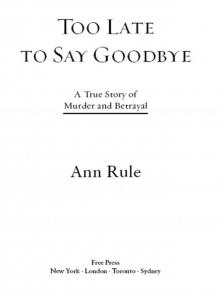 Too Late to Say Goodbye: A True Story of Murder and Betrayal
Too Late to Say Goodbye: A True Story of Murder and Betrayal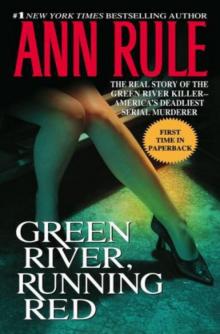 Green River, Running Red
Green River, Running Red Bitter Harvest
Bitter Harvest Dead by Sunset: Perfect Husband, Perfect Killer?
Dead by Sunset: Perfect Husband, Perfect Killer?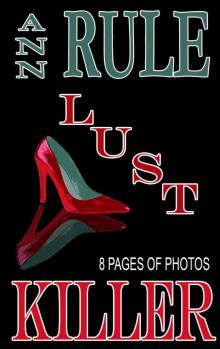 Lust Killer
Lust Killer And Never Let Her Go: Thomas Capano: The Deadly Seducer
And Never Let Her Go: Thomas Capano: The Deadly Seducer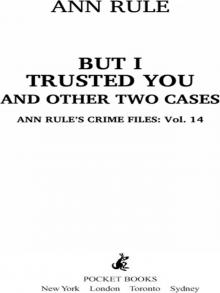 But I Trusted You and Other True Cases
But I Trusted You and Other True Cases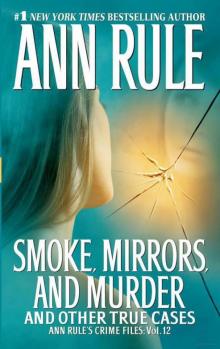 Smoke, Mirrors, and Murder and Other True Cases
Smoke, Mirrors, and Murder and Other True Cases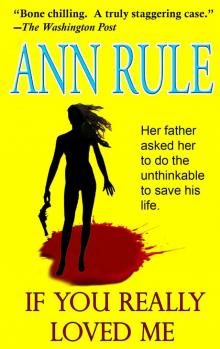 If You Really Loved Me
If You Really Loved Me Kiss Me, Kill Me and Other True Cases
Kiss Me, Kill Me and Other True Cases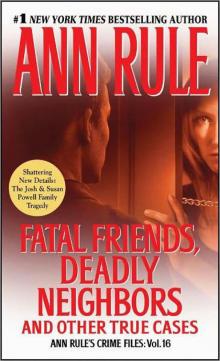 Fatal Friends, Deadly Neighbors and Other True Cases
Fatal Friends, Deadly Neighbors and Other True Cases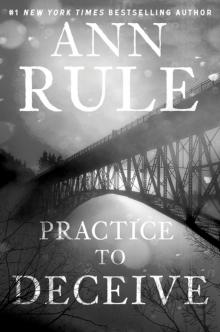 Practice to Deceive
Practice to Deceive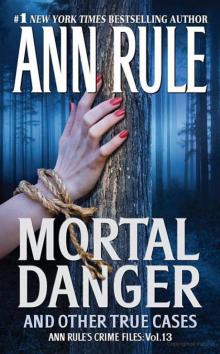 Mortal Danger and Other True Cases
Mortal Danger and Other True Cases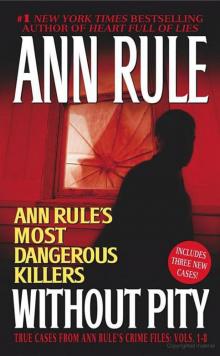 Without Pity: Ann Rule's Most Dangerous Killers
Without Pity: Ann Rule's Most Dangerous Killers Everything She Ever Wanted
Everything She Ever Wanted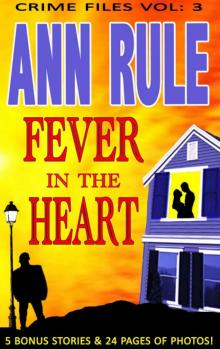 A Fever in the Heart and Other True Cases
A Fever in the Heart and Other True Cases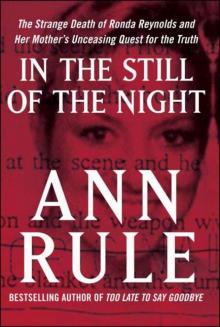 In the Still of the Night
In the Still of the Night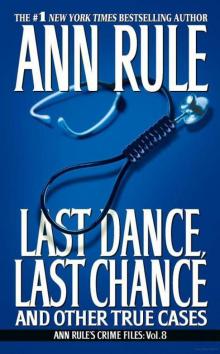 LAST DANCE, LAST CHANCE - and Other True Cases
LAST DANCE, LAST CHANCE - and Other True Cases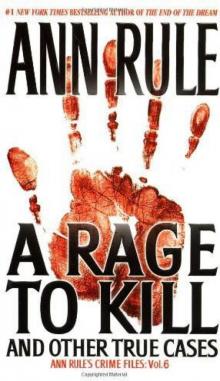 A Rage to Kill
A Rage to Kill The I-5 Killer
The I-5 Killer The Stranger Beside Me
The Stranger Beside Me Everything She Ever Wanted: A True Story of Obsessive Love, Murder, and Betrayal
Everything She Ever Wanted: A True Story of Obsessive Love, Murder, and Betrayal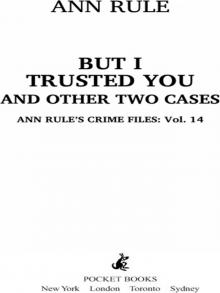 But I Trusted You
But I Trusted You Without Pity
Without Pity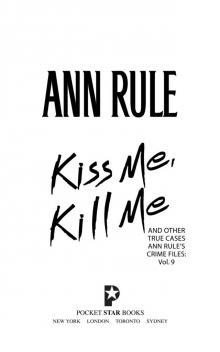 Kiss Me, Kill Me
Kiss Me, Kill Me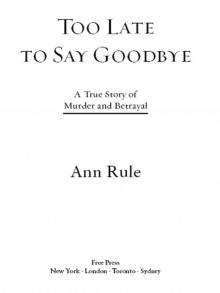 Too Late to Say Goodbye
Too Late to Say Goodbye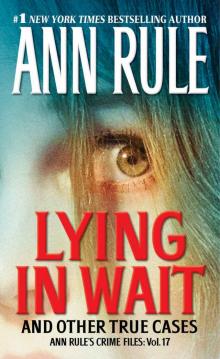 Lying in Wait
Lying in Wait Fatal Friends, Deadly Neighbors
Fatal Friends, Deadly Neighbors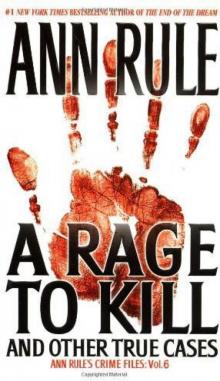 A Rage to Kill: And Other True Cases
A Rage to Kill: And Other True Cases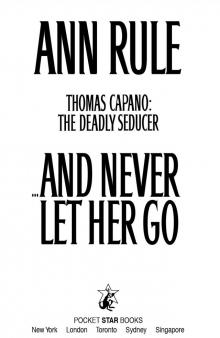 And Never Let Her Go
And Never Let Her Go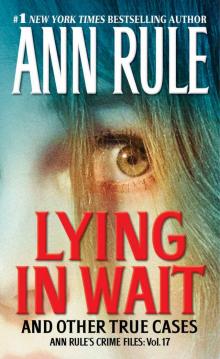 Lying in Wait Ann Rule's Crime Files Vol.17
Lying in Wait Ann Rule's Crime Files Vol.17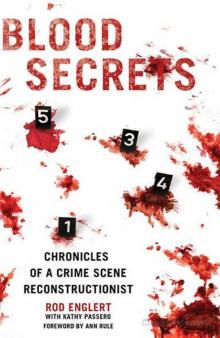 Blood Secrets: Chronicles of a Crime Scene Reconstructionist
Blood Secrets: Chronicles of a Crime Scene Reconstructionist No Regrets
No Regrets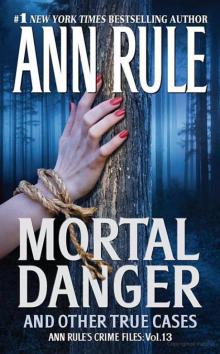 Mortal Danger
Mortal Danger But I Trusted You: Ann Rule's Crime Files #14
But I Trusted You: Ann Rule's Crime Files #14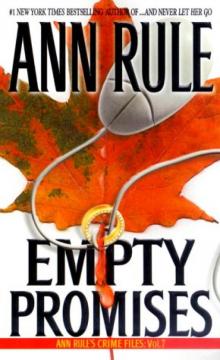 Empty Promises
Empty Promises Dead by Sunset
Dead by Sunset Last Dance, Last Chance
Last Dance, Last Chance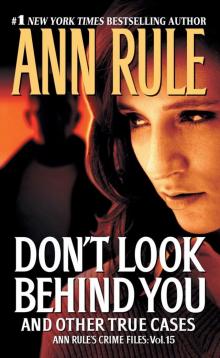 Don't Look Behind You
Don't Look Behind You